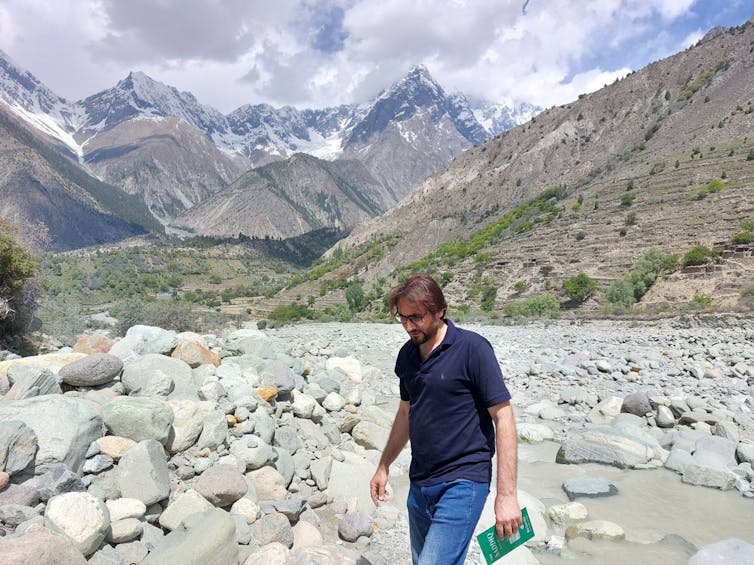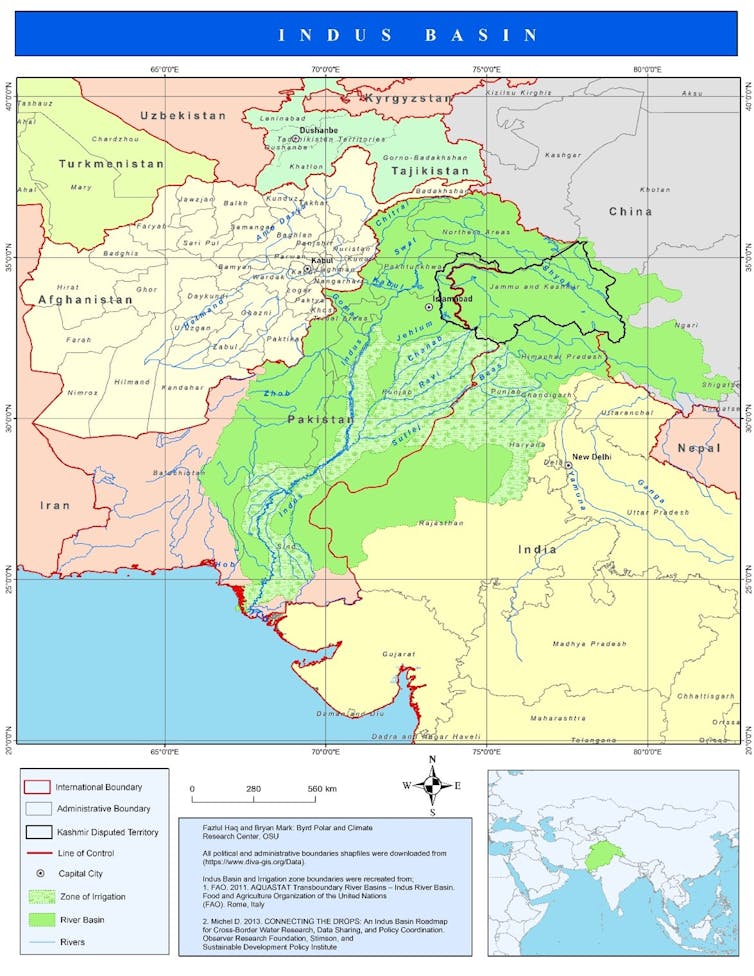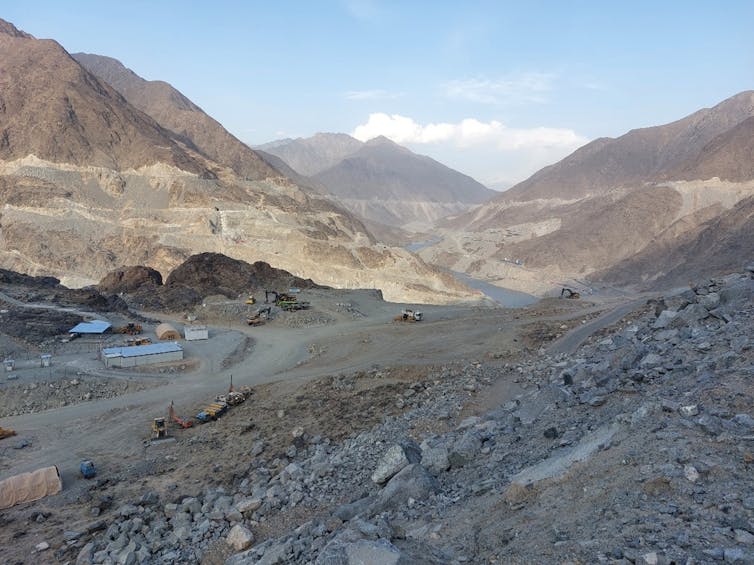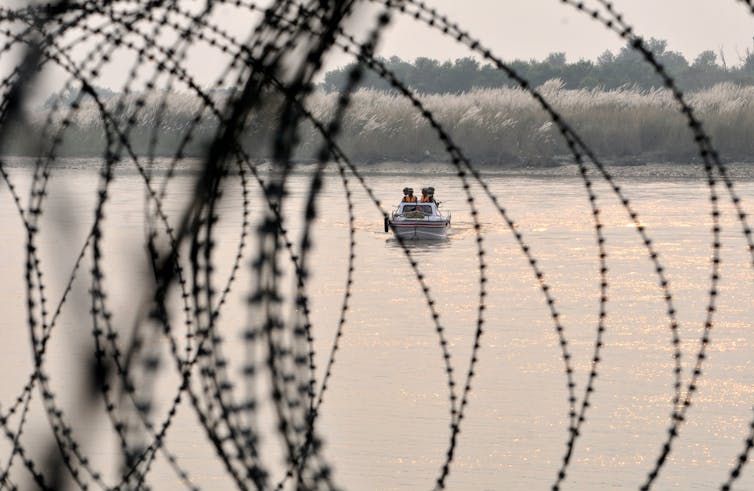In 1995, the Vice-President of the World Bank, Ismail Sergetdin, warned that if the conflicts of the previous 100 years had been on oil, “the wars of the next century will be waged on the water”.
Thirty years later, this prediction is tested in one of the most volatile regions in the world: cashmere.
On April 24, 2025, the Government of India announced that it would retrograde diplomatic ties with its neighbor Pakistan for an attack by militants in cashmere who killed 26 tourists. As part of this cooling of relations, India said that it immediately suspend the Industry Water Treaty – a several decades old agreement that allowed the two countries to share the use of water from the rivers from India to Pakistan. Pakistan has promised reciprocal measures and warned that any disturbance in its water supply would be considered “an act of war”.
The current flareup has intensified quickly, but has a long history. At the Industry Basin Water Project of Ohio State University, we are engaged in a multi -year project investigating on the transfronter water dispute between Pakistan and India.

Fazlul Haq / Indus Basin Water Project / Ohio State University, CC by-Sa
I am currently in Pakistan which is working in the field in cashmere and through the Indus basin. Geopolitical tensions in the region, which have been aggravated by the recent Pahalgamo attack, the cashmere administered by the Indians, constitute a major threat to the Water Treaty. The same goes for another factor that helps increase tensions: climate change
A fair solution to disputes
The Rivière Indus has supported life for thousands of years since the Harappan civilization, which has prospered between 2,600 and 1900 BCE, which is now Pakistan and North West India.
After the partition of India in 1947, control of the Industry river system became a major source of tension between the two nations that emerged from the partition: India and Pakistan. Disputes appeared almost immediately, especially when India temporarily stopped water flow to Pakistan in 1948, which sparked fears for agricultural collapse. These first confrontations led to years of negotiations, leading to the signing of the Industry Water Treaty in 1960.

Fazlul Haq / Bryan Mark / Byrd Polar and Climate Research Center / Ohio State University, CC by
Broget by the World Bank, the Industry Water Treaty has long been hailed as one of the most successful cross -border water agreements.
He divided the industrial basin between the two countries, giving the control of India Oriental rivers – delighted, Beas and Sutlej – and control of Pakistan on Western rivers: Industs, Jhelum and Chenab.
At the time, this was considered a fair solution. But the treaty was designed for a very different world. At the time, India and Pakistan were newly independent countries that worked to settle in the middle of a world divided by the Cold War.
During its signing, the population of Pakistan was 46 million and India was 436 million. Today, these figures have reached more than 240 million and 1.4 billion, respectively.
Today, more than 300 million people are counting on the Industry river basin for their survival.
This expressed increased pressure on the precious source of water which is between the two nuclear rivals. The effects of global warming, and the continuous struggle of the contested region of cashmere, only added to these tensions.
Impact of the merger of glaciers
Many problems today are due to what has not been included in the treaty, rather than what was.
At the time of the signature, there was a lack of complete studies on the massive balance of glaciers. The hypothesis was that the Himalayan glaciers, which fuel the industry river system, were relatively stable.
This lack of detailed measures meant that future changes due to climate variability and ice melting were not taken into account in the design of the treaty, any more than factors such as the exhaustion of groundwater, pollution of pesticide water, the use of fertilizers and industrial waste. Similarly, the large -scale hydraulic development potential of the region by dams, tanks, canals and hydroelectricity has been widely ignored in the treaty.
Reflecting contemporary hypotheses on the stability of glaciers, negotiators assumed that hydrological models would remain persistent with historical flows.
Instead, the glaciers fueling the Indus basin began to melt. In fact, they are now based at record rates.

FAZLUL HAQ / INDUSE BASIN Water Project / Ohio State University
The World Meteorological Organization reported that 2023 was the driest year worldwide in more than three decades, with rivers lower than normal rivers disturbing agriculture and ecosystems. The world’s glaciers have also seen their greatest loss of mass in 50 years, releasing more than 600 gigatons of water in rivers and oceans.
The Himalayan glaciers, which provide 60 to 70% of the summer flow of the Indus river, decrease rapidly. A 2019 study estimates that they lose 8 billion tonnes of ice per year.
And a study by the International Center for the development of integrated mountains revealed that the Kush-Karakoram-Himalayan Hindu glaciers had melted 65% faster in 2011-2020 compared to the previous decade.
The glacier’s cast iron rate poses a significant challenge to the long -term efficiency of the treaty to ensure essential water for all those who count on the Industry river basin. Although it can temporarily increase the flow of the river, it threatens the long -term availability of water.
Indeed, if this trend continues, the water shortages will intensify, in particular for Pakistan, which depends strongly on the Indus during dry seasons.
Another failure of the Industry Water Treaty is that it only deals with the distribution of surface water and does not include provisions for the management of groundwater extraction, which has become an important problem in India and Pakistan.
In the Punjab region – often called the bread base of the two nations – a strong dependence on groundwater leads to overexploitation and depletion.
The groundwater now contributes to a large part – around 48% – water withdrawals in the Indus basin, especially during dry seasons. However, there is no cross -border framework to supervise the shared management of this resource as reported by the World Bank.
A contested region
It was not only climate change and groundwater that was ignored by the editors of the Industry Water Treaty. Indian and Pakistani negotiators also neglected the question and status of cashmere.
The cashmere has been at the heart of Indian-Pakistani tensions since the score in 1947. At the time of independence, the princely state of Jammu-et-Cachemire had the opportunity to access India or Pakistan. Although the region had a Muslim majority, the Hindu sovereign has chosen to access India, triggering the first Indian-Pakistani war.
This led to a ceasefire not mediated in 1949 and the creation of the control line, effectively dividing the territory between the cashmere administered by the Indians and the cashmere administered by Pakistan. Since then, cashmere has remained a disputed territory, claimed by the two countries and serving as a flash point for two additional wars in 1965 and 1999, and many skirmishes.

Hulton-Deutsch / Corbis collection via Getty Images
Despite being the main source of water for the basin, the Kashmiris had no role in negotiations or decision -making under the treaty.
The region’s agricultural and hydroelectric potential has been limited due to restrictions on the use of its water resources, with only 19.8% of the hydroelectric potential used. This means that cashmiris on both sides – despite life in a region rich in water – have not been able to fully benefit from the resources flowing through their land, because the water infrastructure has mainly served downstream users and larger national interests rather than local development.
Some scholars argue that the treaty has facilitated hydraulic development in Jammu-et-Cachemire, but not necessarily in a way that served local interests.
The hydroelectric projects of India in cashmere – such as the dams of Baglihar and Kishanganga – were a major discord. Pakistan has repeatedly raised the concerns that these projects could change water flows, especially during crucial agricultural seasons.
However, the Industry Water Treaty does not provide explicit mechanisms to resolve these regional disputes, leaving the hydrological and political concerns of untreated cashmere.
Tensions on hydroelectric projects in cashmere brought India and Pakistan to a diplomatic dead end long before the recent attack.
Disputes from the Kishanganga and Ratle dam, now in arbitration in The Hague, have exposed the growing incapacity of the treaty to manage cross -border water conflicts.
Then, in September 2024, India officially called for an examination of the Industry Water Treaty, citing demographic quarters, energy needs and security problems concerning cashmere.

Nitin Kanotra / Hindustan Times via Getty Images
The treaty now exists in a limbo state. Although it remains technically in force, India’s official notice for examination has introduced uncertainty, interrupting key cooperative mechanisms and casting a long -term sustainability of the treaty.
A fair and lasting treaty?
In the future, I support, any reform or renegotiation of the Indus Water Treaty, if it wants to have lasting success, must recognize the hydrological importance of cashmere while engaging votes from the whole region.
The exclusion of the cashmere of future discussions – and neither India nor Pakistan have officially proposed, including the stakeholders of the cashmere – would only strengthen a long -standing marginalization scheme, where decisions concerning its resources are taken without taking into account the needs of its people.
As the debates on “climate resistance”, the treaty continues, ensuring that the cashmere perspectives are essential to create a more equitable and lasting cross -border water frame.
Nicholas Breyfogle, Madhumita Dutta, Alexander Thompson and Bryan G. Mark at the Industry Basin project of Ohio State University contributed to this article.


